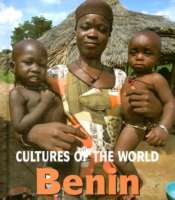
Ruby’s voice is so loud, it’s driving everyone crazy! Then Ruby’s jazz-playing neighbors come up with a plan to help her control her volume. Ruby finally learns to sing to her heart’s content without everyone needing earplugs!
Materials from Africa

Ruby’s voice is so loud, it’s driving everyone crazy! Then Ruby’s jazz-playing neighbors come up with a plan to help her control her volume. Ruby finally learns to sing to her heart’s content without everyone needing earplugs!

Although he is continually getting into trouble, Tapiwa’s uncle becomes her best friend when he comes from Mozambique to live with her family in Harare, Zimbabwe.

From China to Egypt, and Spain to Hawaii, people have gathered for generations to listen to spooky stories that make the back of their necks prickle.

Adrift in the Mediterranean Sea, Ben falls captive to a band of slave traders and their leader Al Misurata. With his faithful dog Ned at his side, Ben must plot escape as the ship of scoundrels sails up the Libyan coastline toward Italy, where a trap awaits. Ruthless enemies and hard times appear around every bend, but Ben and Ned have quick wits to rely on and, just as important, one another.

This book provides a comprehensive look at the country of Sierra Leone, which gained independence in 1961. Located in western Africa, bordered by Guinea and Liberia, Sierra Leone is recovering from a lengthy civil war that left the country with many challenges. The text offers chapters on the geography, the history, the formation of its new government and its structure, the economy, the environment, the people of Siera Leone, their religion and culture. The book is illustrated with color photography.

This is an informative picturebook biography of Egypt’s only successful female pharaoh. Hatshepsut gained Egypt’s throne when all her male siblings — including the half brother whom she married — died. Originally named regent to her nephew, Tuthmosis III, Hatshepsut gradually assumed more and more power, and eventually had herself crowned pharaoh. Since no word existed for a female ruler, Hatshepsut used the male title. She also wore men’s clothing and a beard, and referred to herself as “he” as well as “she.”
Hatshepsut’s reign was a peaceful and prosperous one. She sent an expedition to explore Punt, an exotic land of riches, and built beautiful monuments, including a magnificent temple on which she had artists carve and paint scenes from her life and reign. Following her death, Tuthmosis III tried to erase evidence of Hatshepsut’s reign to make it seem as though he had succeeded his father directly.
Catherine M. Andronik explains how, despite this vandalism, archaeologists have been able to piece together the story of this unconventional pharaoh’s life.

“Provides comprehensive information on the geography, history, governmental structure, economy, cultural diversity, peoples, religion, and culture of Rwanda”–Provided by publisher.

This book provides a comprehensive look at the country of Benin which gained independence in 1961. Located between Nigeria and Togo, Benin is working to strengthen itself with a free press and a growing economy. The text offers chapters on the geography, the history, the formation of its new government and its structure, the economy, the environment, the people of Siera Leone, their religion and culture. The book is illustrated with color photography.

Wangari Maathai, winner of the 2004 Nobel Peace Prize and founder of the Green Belt Movement, grew up in the highlands of Kenya, where fig trees cloaked the hills, fish filled the streams, and the people tended their bountiful gardens. But over many years, as more and more land was cleared, Kenya was transformed. When Wangari returned home from college in America, she found the village gardens dry, the people malnourished, and the trees gone. How could she work to bring back the trees and restore the gardens and the people?

This book presents a day in the life of a child living in Cairo, discussing the social life, customs, religion, history, and language of Egypt.